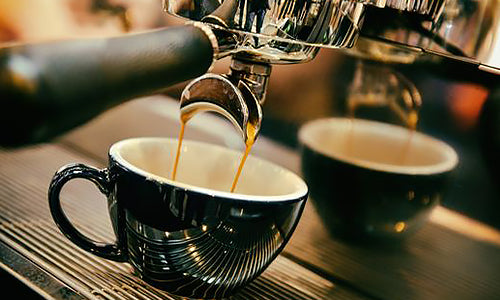Your Cart is Empty

Definingthe essentials of espressomeans just one thing to the coffee lover: getting it right in the twinkle of an eye!
Espresso is one of the most famous Italian coffee types in the world. And nothing puts you off like a cup of bad espresso.
Espresso means express coffee. This means it is prepared at a moment’s notice on request. Talk about impromptu meetings. A cup of express coffee is highly concentrated — a double espresso typically requires 2.5 ounces of coffee and a demitasse cup! It should contain both crema & liquid. To make this coffee, you need a specialized machine that will allow water to percolate through tamped (compressed) coffee grounds forcefully. Percolation takes about 20-30 seconds.
An excellent cup of espresso has four key elements, and all of them must be gotten right. An espresso serves as the basis for most other types of coffees. It is a necessary ingredient for Ristretto, Americano, Long Black & Doppio.
A poorly made espresso dampens the taste of most other coffee types. The five key essentials for making a perfect flavor of espresso are:
For the perfect brew, you need a good espresso brewer. Your machine has to force water through the compressed coffee cake at the appropriate temp & pressure. Krups are automatically disqualified here; keep your old man’s machine for something else. You can get a manual piston machine or a pump-driven electric espresso.
A good espresso machine can make good French pressed coffee too.
Making your amazing mug of espresso needs evenly ground brands. And no, a finer ground does not necessarily give the best crema. A better option would be opting for something a little coarser for more effective percolation. Doesn’t mean that your ground of everything is fine, though — it shouldn’t just be too smooth.
The light roast vs. dark roast comparison here too. The former is less permeable, while the latter allows water to pass through more easily.
The recommendation here is that light roast coffee is used with well-ground beans, while dark roast will do best with a more coarse grind.
It wouldn’t hurt to improve your coffee lingo, you see.
The barista is the professional in charge of espressos. He handles the grinding, dosing & tamping processes. A capable barista is the only way you’re making (or getting) wonderful espresso. The barista has to taste the espresso being made every time the grinder’s smoothness or coarseness is adjusted.
If you’re not working in a coffeehouse, the best you can do is experiment until you get it right. Try until you get it right.
Crema is your foam, arguably the main reason most find espresso wonderful. You can’t take out the allure of crema. The feel in your mouth, the aromatics, the flavor & the taste that appears to stay forever on your tongue.
An espresso cup with great crema is the best anyone can do. It shows that you perfectly handled temperature, pressure, tamping & all other variables.
A yellow or light tan crema coloring may translate to under extraction or a lower than required water temp. You can improve extraction time by using fiber coffee ground or tamping harder.
Can you make the perfect espresso yet? I doubt it. Repeated practice is crucial to your development as a barista. However, knowingthe essentials of espressois a great place to start. If you wondered why espressos turn out bad most times, it’s because the barista has to make a perfect mug for every order. It takes nerves of steel to perform well under pressure.